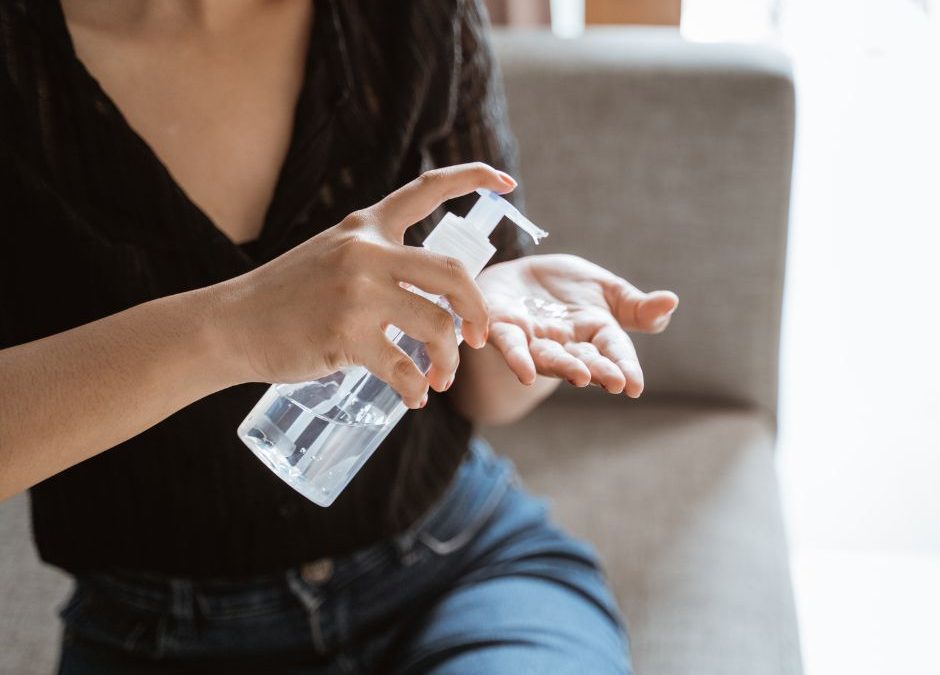To prevent the spread of germs, including COVID-19, CDC recommends washing hands with soap and water whenever possible because it reduces the amount of many types of germs and chemicals on hands. But if soap and water are not readily available, using a hand sanitizer with at least 60% alcohol can help you avoid getting sick and spreading germs to others.
Overview
- Choose hand sanitizers that contain at least 60% alcohol.
- Avoid alcohol-based hand sanitizers that are not approved by Food and Drug Administration (FDA)external icon.
- Properly apply alcohol-based sanitizer by rubbing the gel over all surfaces of your hands and fingers until your hands are dry.
- Swallowing alcohol-based hand sanitizers can cause alcohol poisoning. Keep them out of reach of young children and supervise their use.
How to Select
Alcohol-based hand sanitizers come in all shapes and sizes with different ingredients. Which alcohol-based hand sanitizer do you choose? Check the product label and follow these do’s and don’ts.
DO
- Choose hand sanitizers with at least 60% alcohol (often listed on the label as ethanol, ethyl alcohol, isopropanol, or 2-propanol).
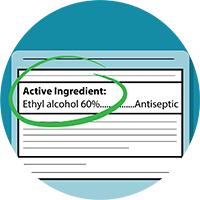
- Follow label directions for use.

DO NOT
- Choose hand sanitizers that contain less than 60% alcohol.
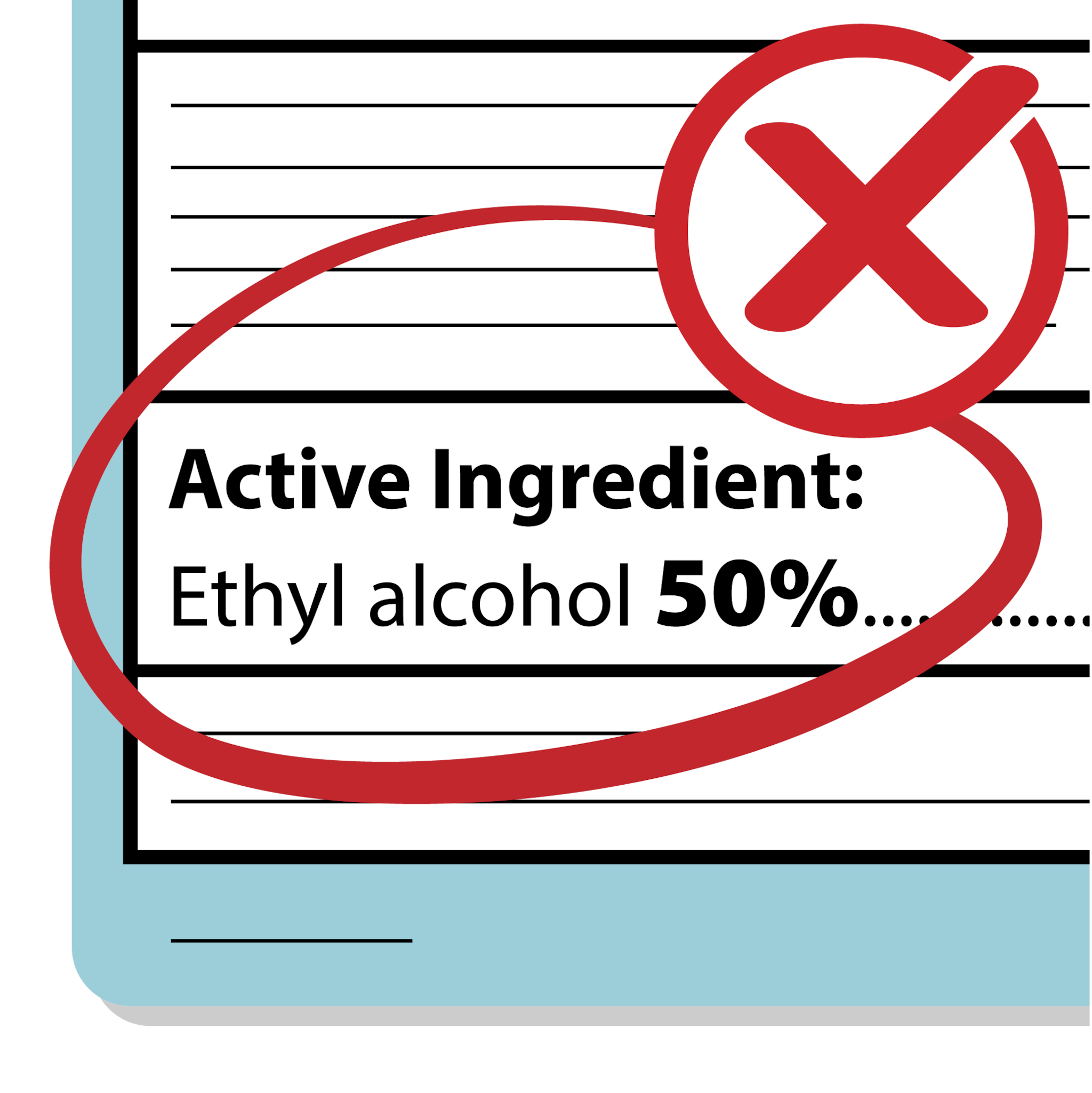
- Choose alcohol-based hand sanitizers on FDA’s Hand Sanitizer Do-Not-Use Listexternal icon.
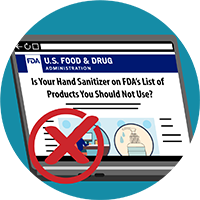
- Choose hand sanitizers labeled as “alcohol-free.”
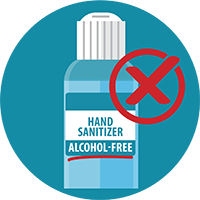
- Choose alcohol-based hand sanitizers packaged in a container that resembles a food or beverage container.
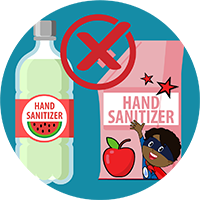
Warning: Alcohol-Based Hand Sanitizers Packaged Like Food or Drinks
The FDA is warning consumers about alcohol-based hand sanitizers that are being packaged in containers that may appear as food or drinks and some that contain food flavors. Eating or drinking these products can cause serious injury or death. FDA Warningexternal icon
How to Use
When using an alcohol-based hand sanitizer
DO
- Rub the gel over all the surfaces of your hands and fingers until your hands are dry.
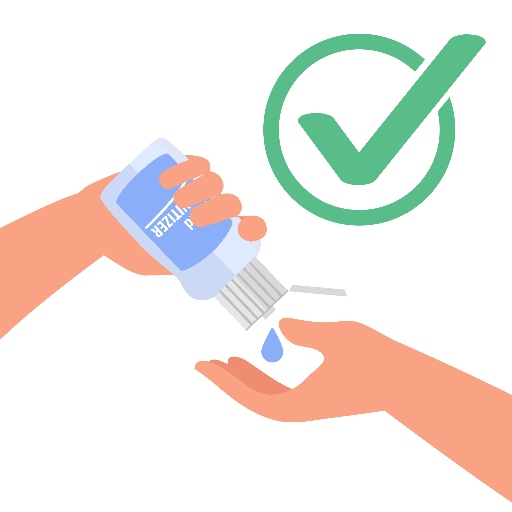
- Keep alcohol-based hand sanitizer out of your eyes.
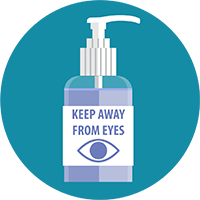
- Store alcohol-based hand sanitizer out of reach and sight of young children.
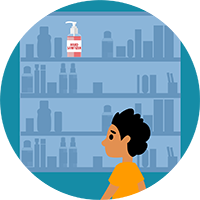
- Supervise young children when they use alcohol-based hand sanitizer.
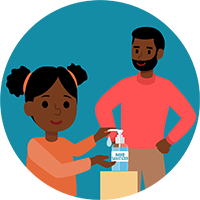
DO NOT
- Rinse or wipe off the alcohol-based hand sanitizer before it’s dry; it may not work well against germs.
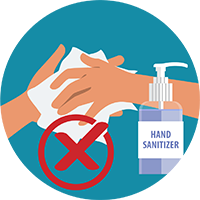
- Use alcohol-based hand sanitizer to clean surfaces. Alcohol-based hand sanitizer is not designed to clean or disinfect surfaces.
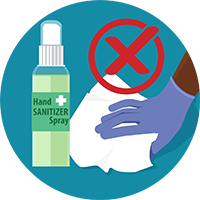
- Store alcohol-based hand sanitizer above 105°F (for example, it should not be stored in a car during the summer months).
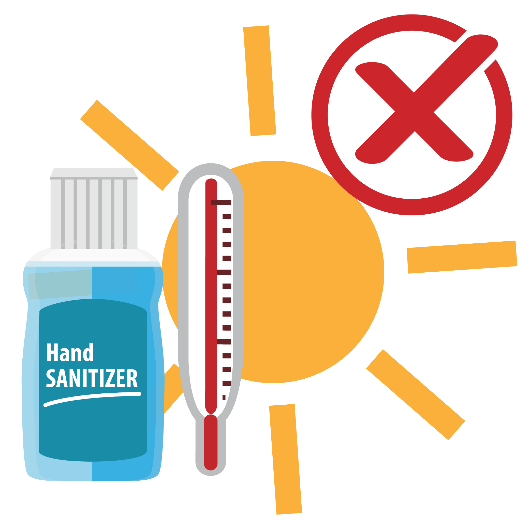
- Swallow alcohol-based hand sanitizers. Swallowing alcohol-based hand sanitizers can cause alcohol poisoning.
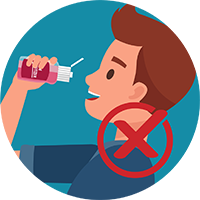
Warning: Swallowing alcohol-based hand sanitizers can cause alcohol poisoning. However, there is no need to be concerned if your children eat with or lick their hands after using alcohol-based hand sanitizer. Call Poison Control immediately at 1-800-222-1222 to get help if someone swallows hand sanitizer.
Hand sanitizer and your pet
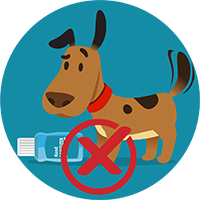
- Do not wipe or bathe your pet with alcohol-based hand sanitizers. If your pet gets alcohol-based hand sanitizer on their skin or fur, rinse or wipe down your pet with water immediately.
- If your pet ingests alcohol-based hand sanitizer (such as chewing the bottle) or is showing signs of illness after accidental exposure, contact your veterinarian or pet poison control immediately.

